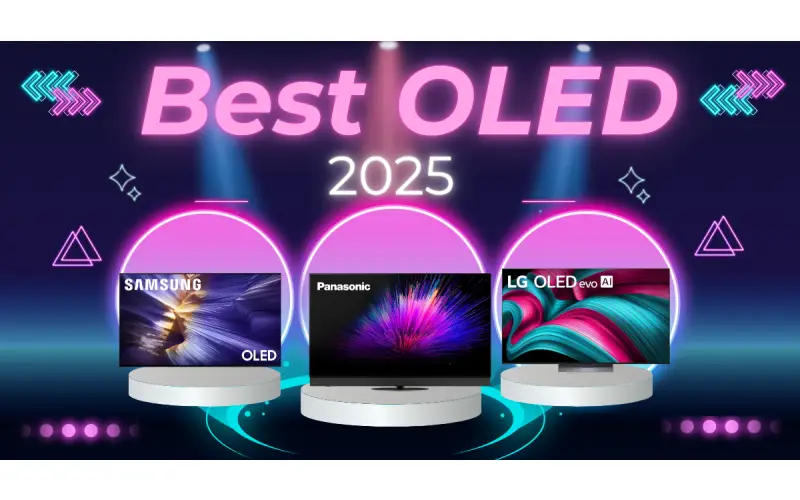By: Dipin Sehdev
The streaming landscape is a constant battle for bandwidth efficiency and visual fidelity. As resolutions climb, and HDR becomes the norm, the pressure on internet infrastructure intensifies. In this arena, the AV1 codec emerges as a formidable contender, promising to revolutionize how we consume video content. Netflix, a streaming giant at the forefront of this evolution, has been instrumental in championing AV1's adoption. This article delves into the intricacies of AV1, exploring its technical underpinnings, its benefits for Netflix users, and the expanding ecosystem of AV1-compatible devices.
Understanding AV1: A Bandwidth Savior
AV1, or AOMedia Video 1, is an open, royalty-free video coding format developed by the Alliance for Open Media (AOMedia), a consortium of industry heavyweights including Google, Mozilla, Netflix, Amazon, and Intel. Unlike its predecessors like H.264 (AVC) and HEVC (H.265), AV1 aims to deliver superior compression efficiency without the burden of licensing fees.
The core principle behind AV1's efficiency lies in its advanced coding tools. It employs a complex set of techniques, including:
- Advanced Prediction Techniques: AV1 utilizes sophisticated intra- and inter-prediction methods to anticipate pixel values based on neighboring pixels and previously decoded frames. This reduces redundancy and minimizes the amount of data that needs to be encoded.
- Transform and Quantization: AV1 employs adaptable transform sizes and quantization parameters, allowing for finer control over the trade-off between compression and visual quality. This enables the codec to tailor its encoding to the specific characteristics of the video content.
- Loop Filtering: Advanced loop filtering techniques are used to reduce artifacts and improve the perceptual quality of the reconstructed video.
- Film Grain Synthesis: AV1 has the capability to synthesize film grain, allowing the codec to remove the actual grain in the original source, encode the cleaner video, and then reconstruct the grain at the decoder. This improves compression efficiency without sacrificing the artistic intent of the filmmakers.
- Constrained Directional Enhancement Filter (CDEF): This filter is used to reduce ringing artifacts and improve the sharpness of edges, especially in high-motion sequences.
- Super Resolution Tools: AV1 can be used to improve the effective resolution of video content.
Essentially, AV1 squeezes more visual information into a smaller data package. This translates to several key advantages:
- Reduced Bandwidth Consumption: Users can stream high-quality video, including 4K HDR content, with significantly lower bandwidth requirements. This is particularly beneficial for those with limited or unstable internet connections.
- Improved Visual Quality: At the same bitrate, AV1 delivers superior visual fidelity compared to older codecs. This translates to sharper images, more accurate color reproduction, and reduced artifacts.
- Enhanced Mobile Streaming: Mobile devices with limited bandwidth and processing power can benefit significantly from AV1's efficiency, enabling smoother and higher-quality streaming experiences.
- Future-Proofing: As resolutions and HDR standards continue to evolve, AV1's advanced coding tools provide a solid foundation for future streaming innovations.
Netflix's AV1 Implementation: A Step Towards Widespread Adoption
Netflix has been a strong advocate for AV1, recognizing its potential to enhance the streaming experience for its global user base. The company's implementation of AV1 focuses on optimizing content delivery for mobile devices and select smart TVs.
Netflix's AV1 implementation is not a one-size-fits-all approach. They have developed a sophisticated encoding pipeline that adapts to the specific characteristics of each video and the capabilities of the playback device. This includes:
- Content-Aware Encoding: Netflix analyzes the complexity of each video and adjusts the encoding parameters accordingly. This ensures optimal compression efficiency without sacrificing visual quality.
- Dynamic Optimizer: Netflix created a dynamic optimizer, that is used to automatically tune the encoding parameters based on the content. This is used in conjunction with the content aware encoding.
- Adaptive Bitrate Streaming (ABR): Netflix's ABR algorithms dynamically adjust the bitrate based on the user's network conditions. This ensures a smooth and uninterrupted streaming experience, even in fluctuating network environments.
- Device-Specific Optimization: Netflix optimizes its AV1 implementation for specific devices, taking into account their processing power and display capabilities. This ensures optimal performance and visual quality across a wide range of devices.
Netflix's commitment to AV1 extends beyond its own platform. The company actively contributes to the development of the codec and collaborates with other industry players to accelerate its adoption.
The Expanding Ecosystem of AV1-Compatible Devices
The number of devices that support AV1 decoding is steadily growing. This includes:
- Smartphones: Many modern smartphones, particularly those powered by recent Qualcomm Snapdragon and MediaTek Dimensity chipsets, support hardware-accelerated AV1 decoding. This includes devices from Google, Samsung, OnePlus, and Xiaomi.
- Smart TVs: An increasing number of smart TVs from manufacturers like Samsung, LG, Sony, and TCL now support AV1 decoding. This enables users to stream high-quality 4K HDR content from Netflix and other platforms.
- Streaming Devices: Devices such as the Google Chromecast with Google TV, Amazon Fire TV Stick 4K Max, and Apple TV 4K (2022) support AV1 decoding.
- PCs and Laptops: Modern CPUs and GPUs from Intel, AMD, and NVIDIA support hardware-accelerated AV1 decoding. This enables users to watch AV1-encoded content in web browsers and media players.
- Gaming Consoles: The Playstation 5 and Xbox Series X/S support AV1 decoding.
- Tablets: Many modern tablets, including those from Samsung and Lenovo, support AV1 decoding.
Here is a more detailed list of devices known to support AV1:
Smartphones:
- Google Pixel series (Pixel 5 and later)
- Samsung Galaxy S21 series and later
- Samsung Galaxy Z Fold/Flip series (Z Fold 3 and later)
- OnePlus 9 series and later
- Xiaomi Mi 11 series and later
- Various devices with Qualcomm Snapdragon 8 Gen 1 and later
- Various devices with MediaTek Dimensity 1000 and later
Smart TVs:
- Samsung Neo QLED 8K and 4K TVs (2021 and later)
- LG OLED and NanoCell TVs (2020 and later)
- Sony BRAVIA XR TVs (2021 and later)
- TCL QLED and Mini-LED TVs (2021 and later)
- Various Android TV devices with recent chipsets.
Streaming Devices:
- Google Chromecast with Google TV
- Amazon Fire TV Stick 4K Max
- Apple TV 4K (2022)
- Nvidia Shield TV Pro (2019)
- Various Android TV boxes.
PCs and Laptops:
- Intel 11th Gen Core processors (Tiger Lake) and later
- AMD Radeon RX 6000 series and later
- NVIDIA GeForce RTX 30 series and later
- NVIDIA GeForce RTX 40 series and later
- Various laptops with the above mentioned cpu's and gpu's.
Gaming Consoles:
- PlayStation 5
- Xbox Series X/S
Tablets:
- Samsung Galaxy Tab S8 series
- Lenovo Tab P11 Pro Gen 2
It's important to note that the availability of AV1 support can vary depending on the specific model and region. Users should consult the manufacturer's specifications to confirm AV1 compatibility.
The Future of AV1: A Promising Horizon
AV1 is poised to play a pivotal role in the future of streaming. Its superior compression efficiency and royalty-free nature make it an attractive alternative to existing codecs. As the ecosystem of AV1-compatible devices expands and content providers increasingly adopt the codec, users can expect to enjoy higher-quality video at lower bandwidth costs.
Netflix's continued investment in AV1 underscores its commitment to delivering a premium streaming experience. The company's efforts to optimize AV1 for mobile devices and smart TVs are paving the way for widespread adoption.
Looking ahead, AV1's capabilities will continue to evolve. Future iterations of the codec may include even more advanced coding tools and features, further enhancing its compression efficiency and visual fidelity. As 8K resolution and other high-resolution formats become more prevalent, AV1's efficiency will become even more critical.
The open and collaborative nature of AV1's development ensures that the codec will continue to improve and adapt to the evolving needs of the streaming industry. The Alliance for Open Media's commitment to innovation will drive the development of new features and tools, ensuring that AV1 remains at the forefront of video compression technology.
In conclusion, AV1 represents a significant step forward in the evolution of video compression. Its ability to deliver superior visual quality at lower bandwidth costs makes it a game-changer for the streaming industry. As Netflix and other industry leaders continue to embrace AV1, users can look forward to a future of more efficient and immersive streaming experiences.





